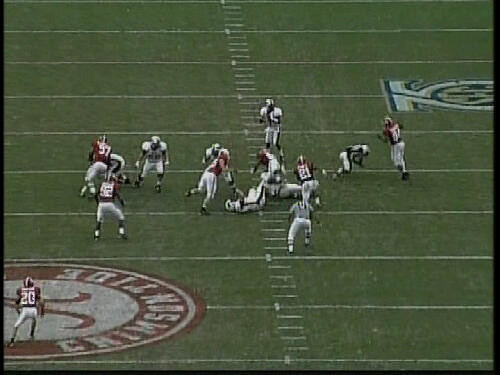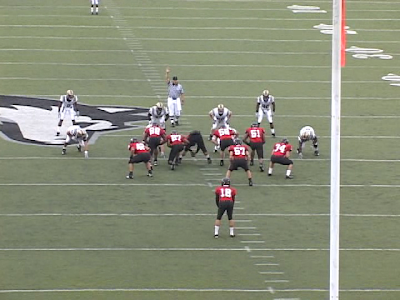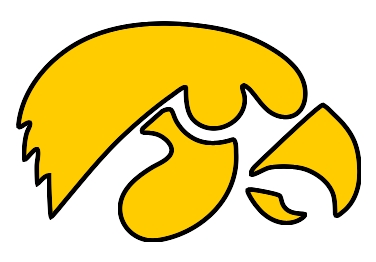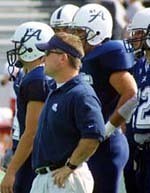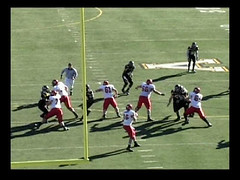* The following is a reprised thread started at the beginning of 2009 on CoachHuey.com. It is reposted here because that thread was later removed, but the subject and content of the discussion was worth preserving.Apologies ahead of time for anyone I end up offending here in this post. I assure you that is not the intent.This is a 'religion' question from a different angle, with no agenda, but plenty of questions.
Many times the Christian faith is leaned upon to support the "mentoring young men" approach to (football) coaching. That providing character lessons from scripture, via bible studies, of honoring the tenets of the Faith.....

That the realm of coaching and Christian faith go hand-in-hand, and in many circles, one implies the other.
If you are a devout enough believer, then surely you are a better coach.
Or that if you do not exhibit enough qualities, you are less than a professional coach.
I realize that MUCH of this (these issues) are intertwined / co-joined, based on culture, society, tradition, and faith....and often times the origins or rationale blur together, so providing a definitive answer may be difficult.

My question, and there are many to come, is......Has anyone served on a Jewish staff? A Muslim staff?....a Hindu staff?
If so, what were your experiences? Did you coach the kids differently?
If not, do you think those coaches are missing something quantifiable? Does their (different) faith handicap them from reaching their 'full potential' as coaches?
I'll provide the caveat to this upfront, this is in no way a slam, gripe, attack on the Christian faith, this is just a question about the culture and dynamics at work in the coaching profession.
Upon further relection, I suppose an ancillary question would be, with as much as we put into prayer breakfasts and Coalition of Christian Coaches, how many of us (or our communities) would shit the bed if Crosstown High was being run by a bunch of _(insert contrarian religion)__?
Also, does one HAVE to affix themselves to a 'denomination' to be considered a good person?Could we do chicken-dinner fundraisers with the Sadhu Vaswani Hindu Cultural Center (as opposed to the 1st Baptist Tabernacle)?
providing early feedback in this discussion, bulldogoption wrote;
The question is a good one..............but I would guess that there aren't many who have served on a staff consisting of faiths other than Christianity.
That was kind of the reference point, and maybe I should have just left it as a rhetorical question or something (because I highly doubt any other staffs exist).
The point being the perceived (intentional or otherwise) sanctity of declaring a faith, and/or proselytizing players (not in and of itself) that creates a higher prestige on coaching staffs. ex. The 'sanctioned equity' that is placed on coaches or staffs simply because of claiming a title (religion) or professing a belief, now holds a once ordinary object into a higher esteem.
Again, this isn't a gripe. I know a lot of great staffs that are comprised of Christians. I'm not on a witchhunt. It is merely trying to tie the logic involved with this emotional association.
Other coaches provided insight, featuring the following;
As a Hindu, I plan to coach football really soon and always ask myself will I be discriminated because of my religion or race. Would people judge me differently and would I be teaching the game in another way than majority of coaches do? The answer to that is that as coaches, we do not teach hatred towards others because thats setting a bad example.
wingtol asked;
I would ask this: Does having NO faith effect coaching more than having faith/religion/beliefs different from the religious norm in the community?
...and that is essentially what the original question was about.
If you go to church and are the biggest SOB.....
If you don't go to church (hegemonic faith group not supported) and are competent.......
What is it that makes us endear honor to the church-goer?
If I am inclined to share the Gospel of Christ during a lesson, would you mind if your other coach is delivering readings of the Koran during Indy?
If so, what is the difference?
This isn't about self-righteous rants of Christian vs Presbyterian vs Lutheran vs Catholics......
.......because none of those even define a person, or as this thread is indicating, their worth.THIS guy is a 'christian' and THAT guy isn't (and WHO defines this?).......why should one be looked at with higher regard (in the coaching profession).
khalife offered this gem;
True or not... the masses won't know until its too late, but instant credibility can be established through religious affiliations, simply due to the strong history of religion within this country...And of course... in America, the religion of shoice has been christianity.... hence buddism, hindu, Islam, can not be utilized to garner such legitimacy, and therefore, those that practice said religion don't shout it to the world, because there's no leverage to be gained.
smartfootball contributor, 'coachinghopeful';
I grew up in a very conservative part of the country where I know that any coach who would merely talk openly about a different faith than the rest of the population would be run out of town on a rail. As a kid I got a lot of flack from my classmates because I didn't attend church--my parents just didn't want to go for their own reasons--and because I didn't know how to recite or conduct myself during prayers at school events since I'd never prayed before. It's still that way. We had no Muslims, no Jews, no Hindus or anything else in our schools.
The handful of Catholic and Mormon kids had to put up with teasing, though as far as I know it rarely got too serious. I am embarrassed to say that some of my teammates enjoyed bullying the atheist, gay, goth, and punk kids (basically anyone who was "different."). A couple of our then-assistants, one of whom became HC my senior year, knew and condoned it. I'm not sure if their religious beliefs played a role or not, though. That and a $17 million sexual harrassment lawsuit probably contributed to their firing a few years later.It's not been that long ago that my hometown made the national news because a very small, very vocal group of parents claimed that using fairy tales to teach elementary school children to read was secretly an evil plot to corrupt their good Christian kids and turn them into little satanists--no, I'm not exaggerating. They were actively telling their kids not to do their school work and to disobey their "anti-Christian" teachers. Every so often people here still make very public scenes demanding that religion be actively brought into the schools and government.
Just about any local community here would have a fit if any non-Christian (or even a non-specific-and-accepted-denomination-Christian) became a coach or teacher and started talking to kids about his religious or spiritual beliefs. There would be a few overprotective parents who would literally jump at the opportunity to file a lawsuit in the name of sticking up for Jesus, even if the coach was being respectful of everyones' beliefs and never did anything wrong.
This is about the cultural significance placed on claiming the hegemonic religious association. I believe it has been made clear several times that this is NOT about if witnessing is important, justified, or debatable.
I think Khalife really hit the nail on the head with regards to political associations / usage of these titles to imply trust/competency equity ("instant credibility") - I was hoping to explore not necessarily HOW this is, but WHY we (as a profession) fall for it to vouch for coaching efficacy and/or why this formula isn't applied to other faiths.
Imagine Dan Reeves or Tony Dungy (instantly associated men of faith) professing Allâh throughout their coaching career, would they be revered differently, more/less competently?
My point being, these guys are seen as their coaching record + (something else)
The blind, spiteful, rhetoric that we use to classify groups (thereby lauding prestige on like-minded circles), only further fuels this kind of back-slapping, carte blanche good-ole-boying. If Kurt Warner's story wasn't palatable to the majority (if he was of a different religous persuasion), would he be seen differently? In that same regard, in the coaching profession, we do the same thing. "Coach John David's Wing-T" is entirely superior to "Coach Piyush's Wishbone", so when you go to the clinics, one of those guys is much more marketable.

Puerto Rican coach, 'acard78' provided one of the most succinct illustrations of this at work when he wrote;
was cassius clay viewed different than mohamed ali?..... was lew alcindor viewed different than kareem abdul jabar? thats were the answer to this question is... (does religion cause the public to have a preconception about a person, do they lose respect if they are not christians?) but yeah there is still ignorance out there. it is also more prevelant in some places than others.
coachweav88
I feel the same thing is happening in America.
People think America is a "Christian nation" , so therefore being American=being a Christian. Not true.
and that captures it right there.
The converse is true, as well.
Christian = American.............
.................not Christian?..... well, you can't be American, then can you?
And again, not saying ANYTHING against the Gospel or faith. This is entirely about perception and using these backdrops to present something as more than it is. The same calculus could be applied to a 'gun-owner' vs 'non-gun owner' if you live in a hunting community. But because religion is so predominant in these regions (and implies so much about character) it would appear to be the least common denominator.
I'm going to go off the deep-end here, so feel free to bail out, but....If a coach is "of faith" and feels the need to share it with his players, obviously, that is okay.
However, if a coach does not believe in religion, would we feel the same if he shared his views against practicing superstitions?
Just thinking aloud, but are 'evangelical' coaches more inclined to believe in "systems" as the saving grace, (ala substance of things hoped for) rather than believing in that which they can teach? Whereas, I am going to run the Rice Krispy offense, and that alone will give us wins (ala, I just need to pray and God will take care of things) rather than taking the attitude of doing it all yourself (if I don't ensure this happens, it won't happen).
All I am asking is - does this way of thinking lend itself to less accountability, less rational approach to getting it done?
Even everyone's favorite gridiron academic, 'spreadattack' chimed in with;
The one thing that interests me is why is faith, and specifically christianity
so tied up with football, such that this topic would even be asked and
attract anyone. My very amateur guess there is that it is cultural: football
is universal of course, but very heavily influenced by the south and
southwest, and similarly faith is very prominent there (for a variety of
reasons). Basketball is more east and west coast, and I hear about this kind
of "faith" stuff and its importance less frequently with respect to it.
Just pointing out that if one follows an irrational path (superstition), will that irrational attitude carry over to how they view impartation of material (things happen without effort being put forth)?
And I agree, it IS completely cultural (not that that is a bad thing). And I think, by and large, that is part of the question posed at the beginning of this thread.
Separating culture and tradition from actual "faith" or true belief. It is like separating Nationalism and Christianity in America....they are so intertwined it is difficult to distinguish where one starts and the other begins. I started this thread / posted the question just to receive feedback, I am not sure there actually is an "answer" out there for what I was asking.
coachweav, this thread specifically is NOT presenting a question of sharing faith / yada yada. I think you hit on a good point, though, whereas "doing all you can....with all your heart" is more of an emotional response than an actual rational one. Spiritual = emotional, and are kind of at odds with pragmatic real-time solutions. And this sometimes clouds the issue of actually 'coaching' (teaching) because we are really, really emotional (but that doesn't mean we gave the kids anything they can use.....How-to)
The analogy of this hypothesis is, "everything I do, I hit with a hammer. All day long, I hit things with a hammer and they get fixed.So when I am presented with a nut and bolt, do I just bang away with a hammer?"
Do I believe if I say "AllaKazaam!", good things will happen (rather than me going out and making good things happen) - am I more inclined to just believe good things will happen (without me really ensuring that things/works are done to make it happen)?
Earlier posts touched on this topic as well;



























